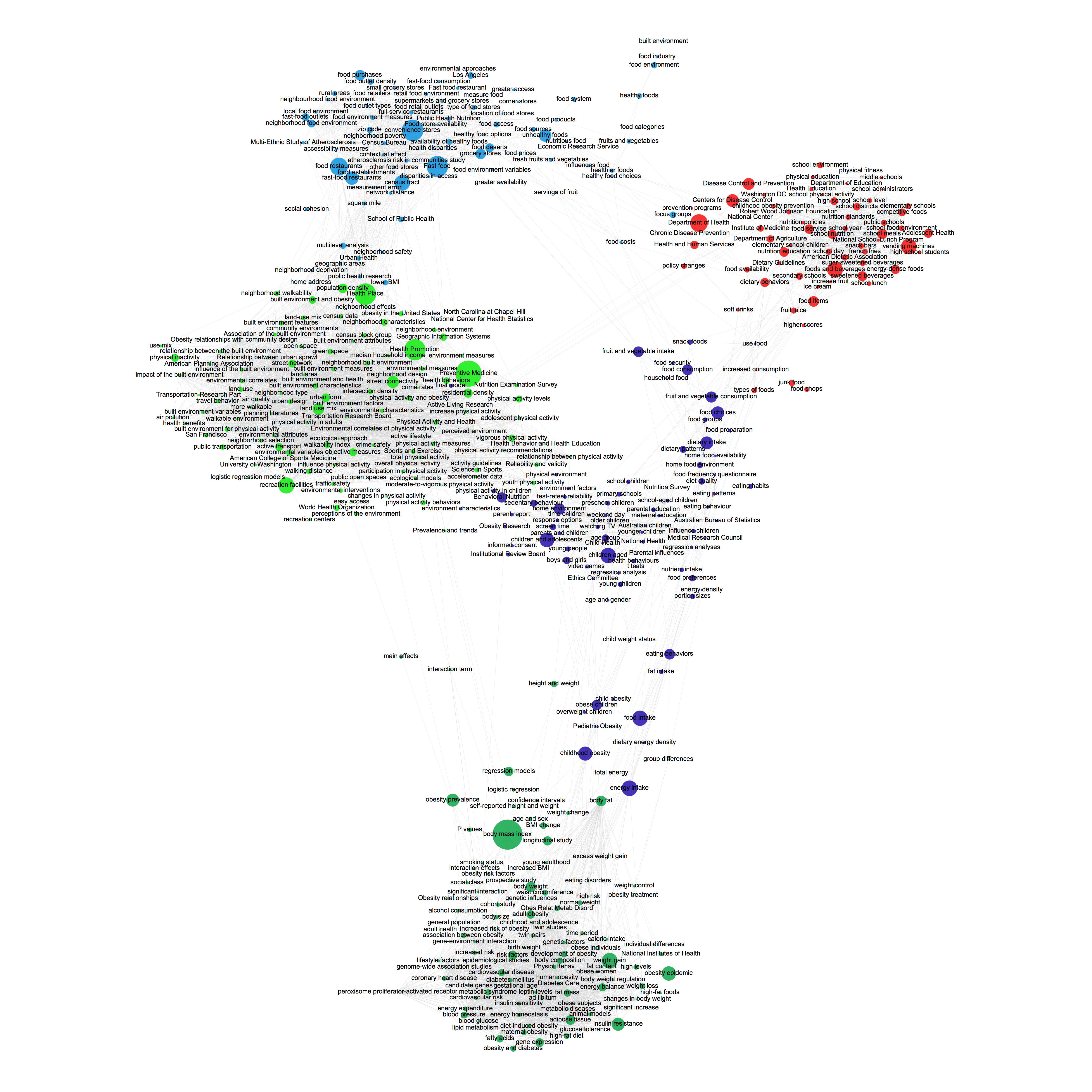Three years ago, TANTlab was in search of new collaborators. We had developed tools and skills in harvesting and exploring large datasets, but similar to other digital method labs in Europe we also experienced difficulties in engaging external audiences. We had therefore formulated a participatory design strategy, which essentially aimed at involving external stakeholders directly into the process of exploring large datasets. Our hope was that issue experts - people with in-depth knowledge about specific fields – could help us ask more interesting questions and develop more relevant digital analyses.
An extraordinary opportunity for working with issue experts arose, when we were contacted by the Copenhagen Centre for Health Research in the Humanities at the University of Copenhagen. The Centre was conducting a project on obesity research and they were interested in exploring if large amount of online harvested data - research articles, policy reports, social media data - could be used to understand how specific environments cause populations to develop obesity. Together with the Centre we organized a 3-day datasprint to explore obesogenic environments. From its elaborate network, the Center invited a handful of leading international obesity researchers to participate in the data exploration work.
We have described the design and the flow of the workshop in this video: Datasprints Doing Things Together. Fast.
The inspiration for what would later become the article in Obesity Reviews grew out of the interactions at the workshop and the issues experts’ efforts to convey their knowledge of the field. One of the issue experts, Stanley Ulijaszek, a professor in nutritional anthropology from Oxford University, explained to us that the notion of obesogenic environments is loaded with political importance. The term has been used by policy actors to organized grand scale efforts to combat national obesity epidemics. The term has also been used by researchers as a vehicle for connecting and integrating various streams of research. In general, the field of obesity research is alive with claims that ‘we should’ take a systemic, holistic view at obesogenic environments. But it is less clear if the research field actually is coherent or whether it would lend itself to a neat synthesis under the rubric of obesogenic environments. Together with Stanley Ulijaszek and other collaborators from the University of Copenhagen, we decided to pursue this question by conducting a large scale mapping of how the notion of environment was used in the most cited research publications in the field.

What we found, and what we report in the Obesity Review article, was a surprisingly fragmented picture. We find that at least five different notions of environment are currently active in the field. We call these the Institutional, Food, Built, Family and Bodily environment. We also show that each of these notions of environment come with different ideas about what obesity is and how it interacts with its surroundings. We produce a large overview map of the key terms associated with each notion of environment, and we argue that the clusters on this map are driven practical opportunities to measure and engage with obesity. For this reason, the research fields’ different engagements and underlying notions of obesity are both overlap and leave gaps. We argue that the five notions of obesity will not come together nicely as the pieces to a puzzle, and we should also not think them as a ‘natural’ division of labour. In our conclusion, we suggest that a clear view of the partially coherent nature of the field will be productive both for policy actors who are trying to coordinate efforts between many different stakeholders, and for researcher who wish to position their own research and future research plans in the context of other positions in the field.
The article in Obesity Reviews also includes a substantial methods section with detailed description of our mixed quali-quantitative method. The dataset was a large text corpus, which we built by harvesting 500 highly-cited articles from Scopus and Web of Science over a 15-year period. Using the CorTexT platform, we then conducted a semantic analysis to identify noun-phrases that tended to be occur together in specific parts of the text corpus. In the next phase, we conducted a network analysis of the material leading to the identification of five discursive clusters. Finally, we collaborated closely with another issue expert, historian of medicine Anne Katrine Kleberg Hansen, and with Stanley Ulijaszek to conduct a qualitative analysis of each of the clusters to identify their different underlying notions of obesity and obesogenic environment.
Developing the analysis and writing the article was a long journey. From the perspective of the TANTlab researchers a few of key lessons stand out. First of all, the project confirms our belief that digital methods have a potential to generate new types of analysis in a broad range of fields. Second, we see the project as a confirmation of the value of collaboration with issue experts. Without a close dialogue and joint data exploration with issue experts, it would simply not have been possible to identity questions that are crucial to obesity research, and to produce an analysis that could be published in one of the fields’ leading journals. Finally, we have learned from the project that a great deal of perseverance is necessary to carry projects all the way through from the intense excitement of a datasprint workshop to publication. This journey required a fresh round of data collection, elaborate discussion among the seven authors, several rounds of rewriting and reframing of the article, and finally the hard work of responding to the very thorough and demanding reviewers of the journal.
Reference:
Elgaard Jensen T, Kleberg Hansen, AK, Ulijaszek S, et al. Identifying notions of environment in Methods using a mixed‐methods approach. Obesity Reviews. 2018. https://doi.org/10.1111/obr.12807
